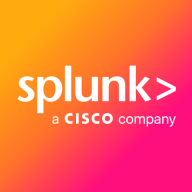

Splunk Enterprise Security and MaxPatrol SIEM are competing solutions within the cybersecurity landscape. Splunk Enterprise Security appears to have the upper hand in pricing and support, while MaxPatrol SIEM excels in robust features valued for investment.
Features: Splunk Enterprise Security is known for its comprehensive data analytics capabilities, real-time threat management, and delivering immediate security insights. MaxPatrol SIEM is recognized for its extensive compliance features, auditing capabilities, and addressing regulatory requirements effectively.
Ease of Deployment and Customer Service: Splunk Enterprise Security provides a seamless deployment experience supported by detailed documentation and solid technical support. MaxPatrol SIEM offers extensive capabilities but entails a more complex deployment process, with responsive customer service making a notable impact.
Pricing and ROI: Splunk Enterprise Security is positioned as an affordable solution offering a favorable ROI through adaptable pricing models. MaxPatrol SIEM, despite being a higher-cost option, justifies its investment with specialized capabilities delivering substantial long-term benefits.
| Company Size | Count |
|---|---|
| Small Business | 109 |
| Midsize Enterprise | 50 |
| Large Enterprise | 263 |
MaxPatrol SIEM offers an advanced security information and event management platform, empowering organizations with real-time detection and remediation capabilities. It integrates seamlessly into infrastructures, delivering enhanced visibility and rapid response to potential threats.
MaxPatrol SIEM is designed to meet the rigorous demands of cybersecurity in modern enterprises. With its ability to process massive volumes of data, it provides insights that are critical for identifying and neutralizing threats quickly. Industry specialists appreciate its rich feature set, though there are calls for improved scalability and more streamlined implementation processes. Users highlight its capacity for deep analytics while suggesting enhancements in reporting functionalities to optimize its deployment and utility further.
What are the key features of MaxPatrol SIEM?In industries like finance and healthcare, where data protection is paramount, MaxPatrol SIEM is integrated to comply with regulatory requirements while offering proactive threat management. Its deployment in these sectors focuses on securing sensitive data and ensuring continuity of operations through robust surveillance and instant response strategies.
Splunk Enterprise Security delivers powerful log management, rapid searches, and intuitive dashboards, enhancing real-time analytics and security measures. Its advanced machine learning and wide system compatibility streamline threat detection and incident response across diverse IT environments.
Splunk Enterprise Security stands out in security operations with robust features like comprehensive threat intelligence and seamless data integration. Its real-time analytics and customizable queries enable proactive threat analysis and efficient incident response. Integration with multiple third-party feeds allows detailed threat correlation and streamlined data visualization. Users find the intuitive UI and broad compatibility support efficient threat detection while reducing false positives. Despite its strengths, areas such as visualization capabilities and integration processes with cloud environments need enhancement. Users face a high learning curve, and improvements in automation, AI, documentation, and training are desired to maximize its potential.
What Are the Key Features of Splunk Enterprise Security?In specific industries like finance and healthcare, Splunk Enterprise Security is instrumental for log aggregation, SIEM functionalities, and compliance monitoring. Companies leverage its capabilities for proactive threat analysis and response, ensuring comprehensive security monitoring and integration with various tools for heightened operational intelligence.
We monitor all Security Information and Event Management (SIEM) reviews to prevent fraudulent reviews and keep review quality high. We do not post reviews by company employees or direct competitors. We validate each review for authenticity via cross-reference with LinkedIn, and personal follow-up with the reviewer when necessary.